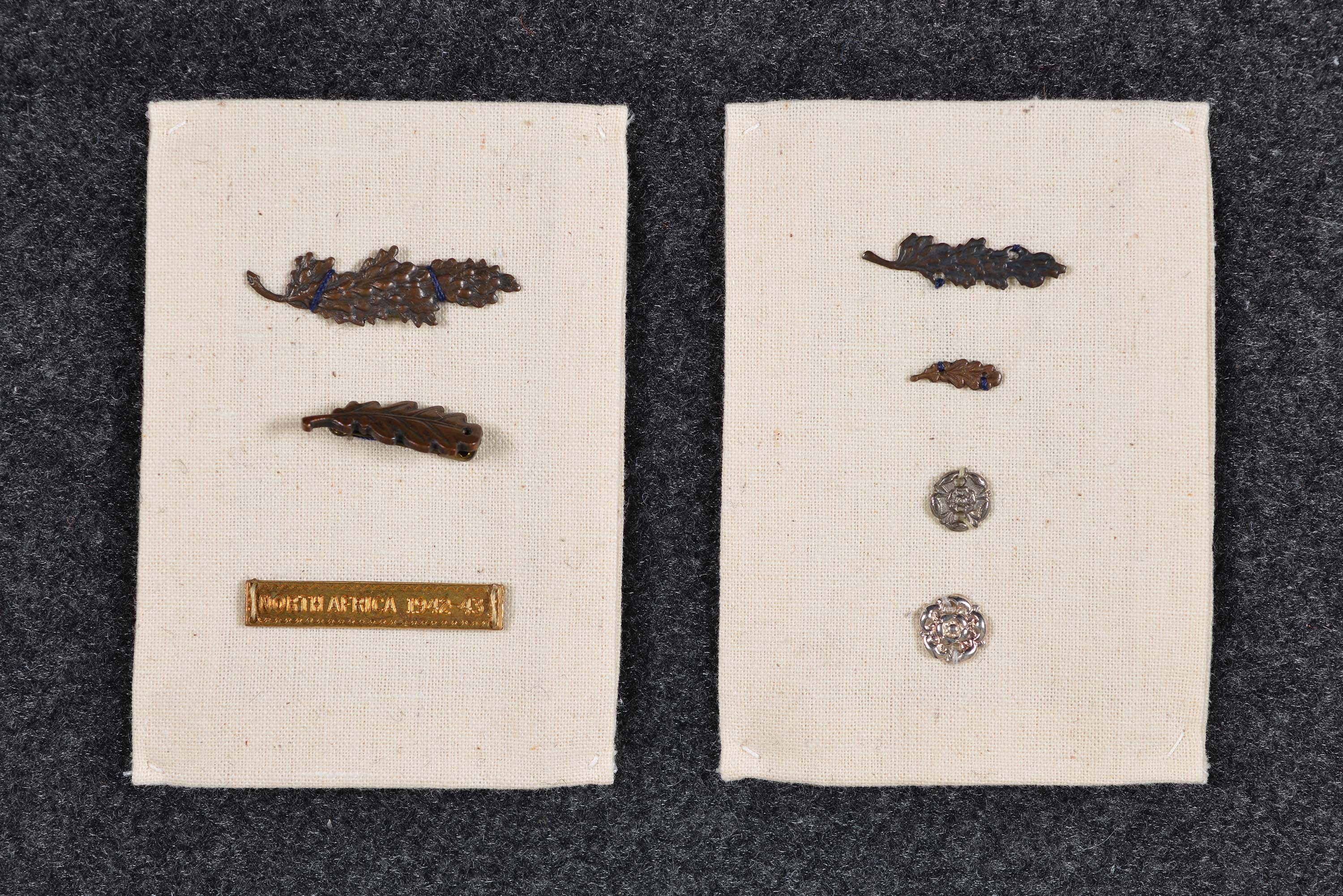Display No. 21F
Medal Devices
Medal devices are emblems or insignia which are attached to medal ribbons to indicate particular service.
Oak leaves denote that the recipient was Mentioned in Despatches, i.e. they were named in an official report submitted by a superior officer for gallantry or meritorious action. Smaller versions of oak leaves were attached to ribbon bars.
Medal clasps indicate a specific campaign or operation for which a medal was awarded. On a ribbon bar, the awarding of a clasp is indicated by a rosette.
Rosettes on a ribbon bar may also denote the award of a medal bar. These bars indicate a second or multiple awarding of a gallantry medal, e.g. if an individual is deemed to have qualified for a DSO (Distinguished Service Order) when one has already been issued to them, then they will be issued a bar to their DSO (thus they have received a “DSO and bar”).
The devices displayed on the left are those worn on the ribbons of full-size medals. Those on the right are worn on ribbon bars.
Medal(s)
Description [Top to Bottom]:
Mention in Despatches emblem 1914-20
The Mention in Despatches emblem 1914-20 is a bronze oak leaf spray device worn on a medal ribbon. It indicates that the recipient was cited for gallantry in an official report submitted by a superior officer. It was instituted in the First World War and issued up until 1920. It was worn on the Victory Medal ribbon or, if no Victory Medal was awarded, on the British War Medal ribbon.
A smaller version of the oak leaf spray is worn on a ribbon bar.
Mention in Despatches emblem 1920-94

The Mention in Despatches emblem 1920-94 is a single bronze oak leaf device worn on a medal ribbon. It indicates that the recipient was cited for gallantry in an official report submitted by a superior officer. It was instituted in August 1920 and is generally associated with the Second World War, usually worn on the War Medal 1939-45.
A smaller version of the oak leaf is worn on a ribbon bar.
Medal clasps
Medal clasps are thin bars attached to the ribbon of a medal to indicate service in a particular operation or campaign. For example, the North Africa 1942-43 clasp, which is worn on the Africa Star, was awarded to personnel of the Royal Navy Inshore Squadrons and Merchant Navy vessels which worked inshore between these dates. It was decided that the maximum number of Second World War stars that could be earned by one individual was five, so those that qualified for more, received a clasp for the ribbon of the appropriate star.
Rosettes
Rosettes are worn on medal ribbons for two reasons. Firstly, to denote the issue of a medal bar indicating a second or subsequent award for gallantry – such as the award of a “DSO and bar”. Rosettes also signify that a medal clasp has been awarded for a particular operation associated with that medal.

